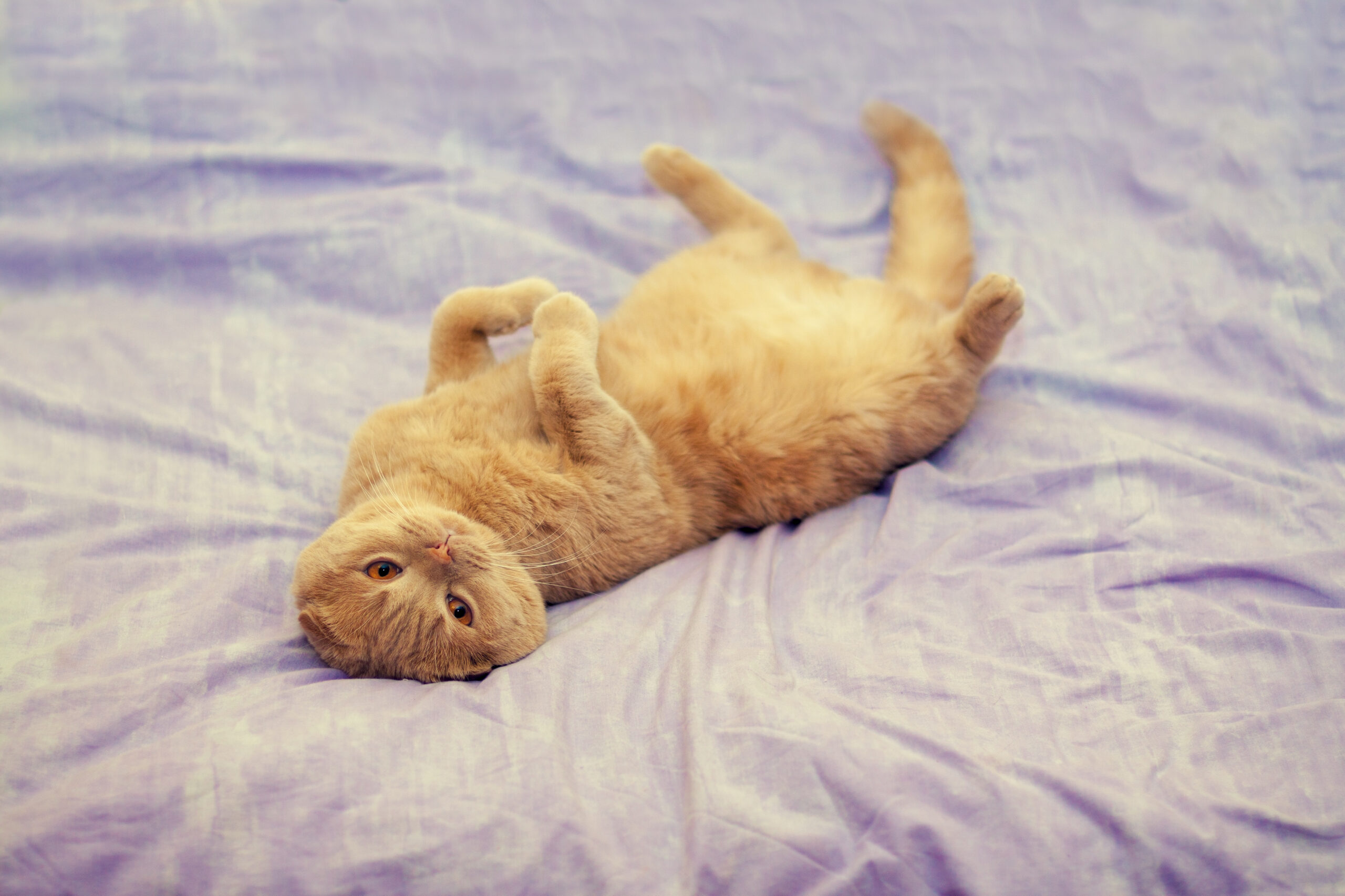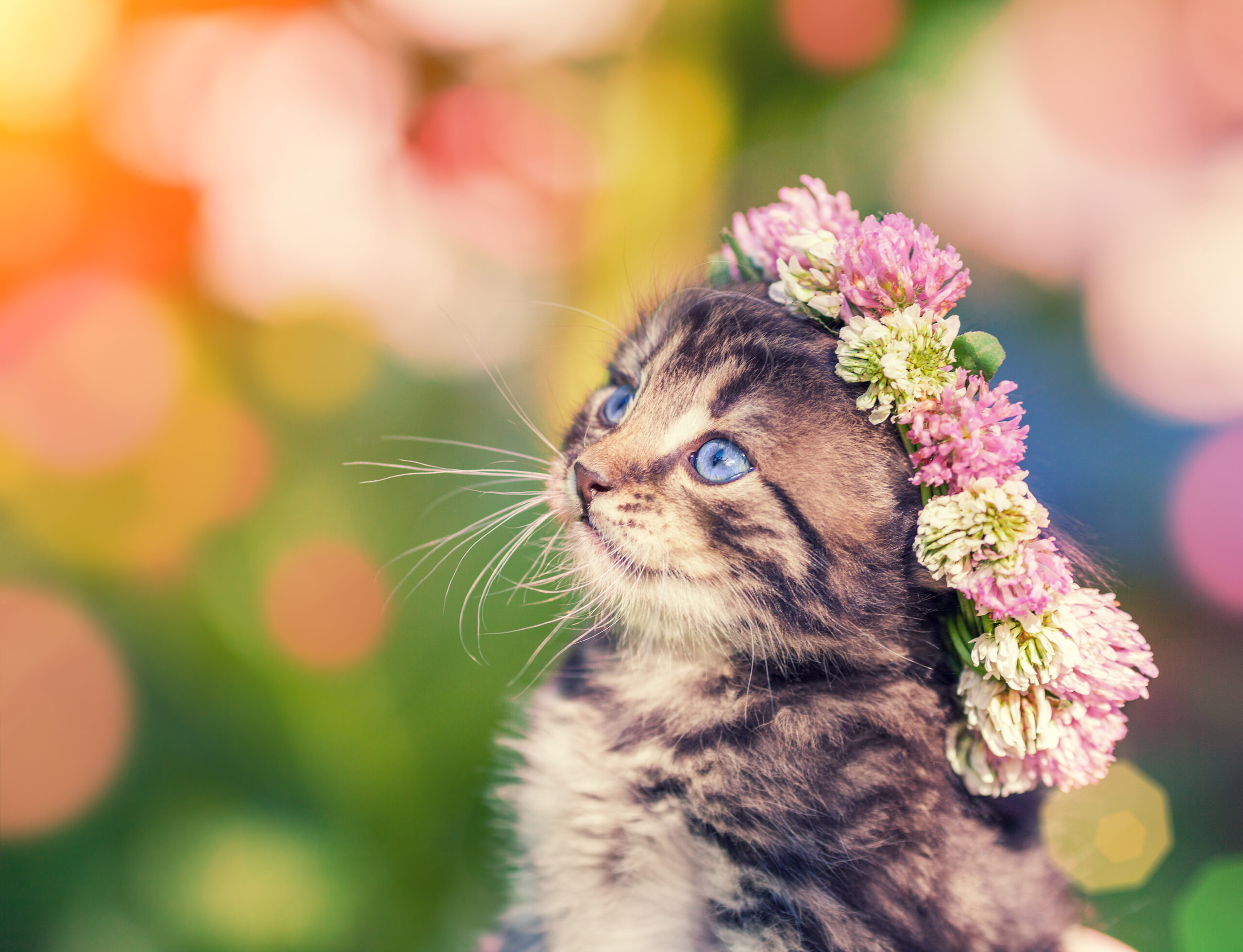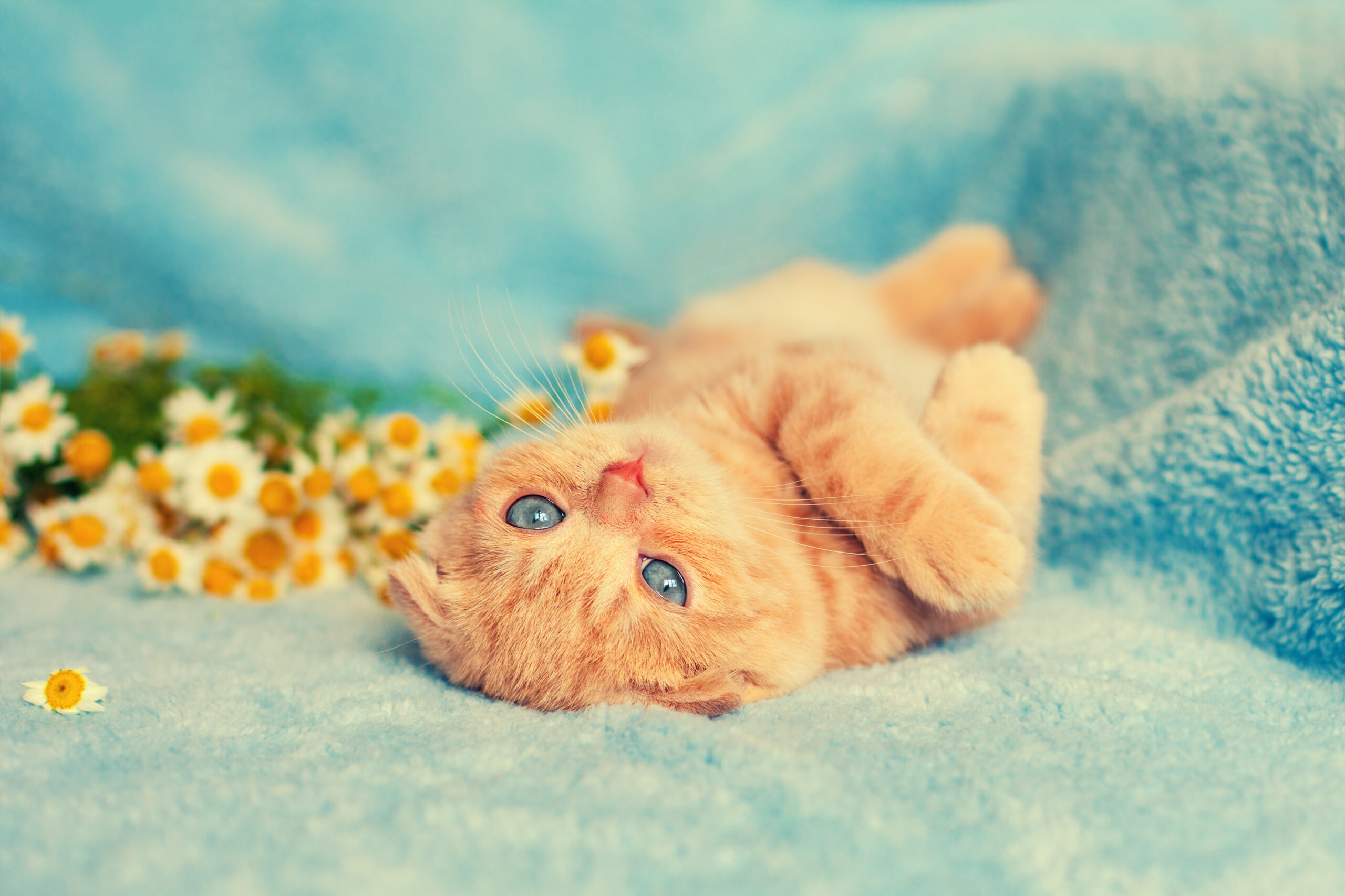Monthly Archives: September 2023
The Best Litter Box for Your Feline Friend: A Buyer’s Guide
Introduction to the Best Litter Box for Your Feline Friend: A Buyer’s Guide
Cats are one of the most popular pets in households around the world. They bring joy, love and companionship into our lives. However, taking care of a cat also comes with responsibilities such as providing them with food, shelter, exercise, grooming, and proper sanitation. One important aspect of maintaining your feline friend’s health is by choosing the right litter box. In this article, we will guide you through everything you need to know about selecting the best litter box for your cat.
The Importance of Choosing the Right Litter Box
Choosing the correct litter box can make all the difference when it comes to keeping your home clean and odor-free while ensuring that your cat has an appropriate place to do their business. The wrong type or size of litter box may result in accidents outside of the box, which can be frustrating for both you and your pet. Additionally, if the litter box is not kept clean regularly, it can lead to health problems for your cat. Therefore, it is essential to choose a litter box that suits your cat’s needs and preferences.
Types of Litter Boxes and Their Features
There are several types of litter boxes available on the market today. Each type has its unique features, advantages, and disadvantages. Here are some common types of litter boxes:
1. Traditional Open Top Litter Boxes – These are the most basic type of litter boxes and come in various sizes and shapes. They have an open top design, which makes them easy to access and clean.
2. Covered Litter Boxes – As the name suggests, these litter boxes have a lid or cover that helps contain the smell and mess. They come in different styles, including hooded and domed designs.
3. Self Cleaning Litter Boxes – These litter boxes use technology to automatically rake waste away from the litter and dispose of it. Some models even flush the waste like a toilet.
4. Sifting Litter Boxes – These litter boxes have a sifter at the bottom that separates clumps from the rest of the litter. This feature allows you to remove only the soiled litter, making it easier to keep the box cleaner.
5. Multiple Cat Litter Boxes – If you have more than one cat, you may want to consider getting multiple litter boxes. It is recommended to provide one litter box per cat plus one extra.
Top 5 Recommended Litter Boxes for Cats
Now that you understand the different types of litter boxes available, let us take a look at five highly recommended options for cats:
1. PetSafe ScoopFree Ultra Automatic Self Cleaning Cat Litter Box
This self-cleaning litter box uses disposable cartridges that last up to three weeks before they need replacing. It cleans itself after every use, leaving behind fresh, clean litter for your cat.
2. PetSafe Simply Clean Hooded Cat Litter Pan
If you prefer a traditional open top litter box, then this option might be perfect for you. Its large size accommodates larger cats comfortably, and the high sides help prevent spills and tracking.
3. Nature’s Miracle Dual Chamber Corner Litter System
For homes with limited space, this corner litter system is ideal. It has two chambers, each with its own entrance, allowing you to separate male and female cats or just give your cat more privacy.
4. Omega Paw Roll’n Clean Self Cleaning Litter Tray
Unlike other automatic litter boxes, this model does not require electricity or batteries. Instead, it relies on a rolling mechanism that pushes waste into a removable tray for easy disposal.
5. Modkat XL Modern Litter Box
Designed with style and functionality in mind, this modern litter box looks sleek and stylish in any room. Its tall walls help reduce litter scatter and provide ample coverage for larger cats.

Conclusion: Making an Informed Decision
Selecting the best litter box for your cat requires careful consideration of factors such as your cat’s age, size, habits, and personal preference. You should also think about how often you plan to scoop the litter, whether you prefer automated or manual cleaning, and the amount of space available in your home. By considering these factors and evaluating the pros and cons of each type of litter box, you can make an informed decision that keeps everyone happy and healthy.
Need a guide on how to keep your cat going in there little box check out this article
5 Common Cat Behaviors and How to Understand Them
Cats are fascinating creatures that can be mysterious at times. They have their own unique personalities, quirks, and behaviors that can leave us scratching our heads in confusion. In this article, we will explore some of the most common cat behaviors and how you can understand them better.
Introduction to Common Cat Behaviors
One thing is for sure – cats are not dogs! While they may seem aloof or independent, cats actually crave attention from their human companions. They just show it differently than dogs do. Cats need love, affection, playtime, and mental stimulation to thrive. When these needs aren’t met, they might engage in certain behaviors as a way to communicate with us.
Understanding Aggression in Cats
Aggressive behavior in cats can be scary and confusing. It’s important to remember that aggression isn’t always intentional; sometimes it’s simply a reaction to fear or discomfort. If your cat seems agitated or defensive, try to identify any triggers that might be causing the behavior. For example, if your cat hisses when you approach her while she’s eating, it could be because she feels threatened by your presence. Try giving her space during mealtimes and avoid sudden movements around her.
Exploring the Meaning of Meowing and Other Sounds
Meowing is one of the most common sounds that cats make, but did you know there are different types of meows? A loud, high-pitched meow might mean your cat wants food or water, while a soft, gentle meow might indicate that she wants attention or affection. Pay close attention to the tone and context of your cat’s meows to better understand what she’s trying to tell you.
The Importance of Scratching and Clawing
Scratching and clawing are natural behaviors for cats, but they can also cause damage to furniture and other household items. Instead of punishing your cat for scratching, provide her with a designated scratching post or pad. This will give her an appropriate place to sharpen her claws and satisfy her instinctual urge to mark her territory.
Toilet Training Your Cat: Litter Box Basics
Litter box training is essential for keeping your home clean and preventing accidents. Make sure to choose a litter box that’s easy for your cat to access and keep it clean and well-maintained. You should also consider the type of litter you use – some cats prefer clumping litter, while others like non-clumping litter. Experiment with different options until you find one that works best for your cat.
Playtime with Your Feline Friend
Playtime is an important part of your cat’s daily routine. Not only does it provide physical exercise, but it also helps to mentally stimulate your cat. Toys such as laser pointers, feather wands, and puzzle toys can help to engage your cat’s hunting instincts and keep her entertained.
How to Deal with Anxiety and Stress in Cats
Anxiety and stress can manifest themselves in many ways in cats, including excessive grooming, hiding, or aggressive behavior. To reduce anxiety and stress levels, create a calm environment for your cat. Provide her with plenty of places to hide and sleep, such as cardboard boxes or cozy beds. You can also use pheromone sprays or diffusers to help soothe your cat’s nerves.
Healthy Eating Habits for Your Cat
A balanced diet is crucial for your cat’s overall health and wellbeing. Choose a reputable brand of cat food that meets all of your cat’s nutritional requirements. Avoid feeding your cat table scraps or people food, which can lead to obesity and other health problems.
Brushing, Bathing, and Grooming Tips
Regular brushing and bathing can help to keep your cat’s fur clean and healthy. Brush your cat weekly to remove loose hair and distribute skin oils throughout her coat. Bathe your cat only when necessary, using a mild shampoo formulated specifically for cats.
Socializing Your Cat with Other Pets and People
While cats are often thought of as solitary animals, socialization is still important for their development. Introduce your cat slowly to new pets or people, providing plenty of positive reinforcement and treats. With time and patience, your cat can learn to tolerate and even enjoy the company of others.
In conclusion, understanding common cat behaviors can help us to build stronger relationships with our feline friends. By meeting their basic needs and providing them with opportunities for play, exercise, and mental stimulation, we can ensure that our cats live happy and fulfilling lives.
Training Your Cat: 5 Easy Steps to a Well-Behaved Feline Friend
Do you ever feel like your cat is driving you crazy with their bad behavior? Scratching furniture, jumping on counters, and ignoring commands are common issues that many cat owners face. But did you know that cats can be trained just like dogs? It’s true! With the right approach, you can teach your feline friend to behave well and listen to your commands. In this article, we will explore five easy steps to training your cat for a better relationship between you and your furry companion.
Introduction to Cat Training
The first step in training your cat is understanding their nature. Cats are independent creatures who prefer to do things on their terms. They also have a strong sense of curiosity and may get into trouble if they aren’t given enough stimulation. To start training your cat, you need to establish a bond of trust and respect. This means setting boundaries and being consistent with your actions.
The Importance of Consistency in Cat Training
Consistency is key when it comes to training your cat. You must always follow through with what you say and do. For example, if you tell your cat not to jump on the counter, you must consistently correct them every time they do so. If you let them get away with it sometimes, they won’t take you seriously. Additionally, you should always reward good behavior and ignore bad behavior. This will help your cat understand what is expected of them.
Reward-Based Training for Cats
Reward-based training involves using positive reinforcement to encourage good behavior. Whenever your cat does something good, such as sitting on command or using the litter box, give them a treat or praise them. This will help them associate good behaviors with rewards and make them more likely to repeat those behaviors in the future. On the other hand, you shouldn’t use physical punishment or scolding, as these methods can cause fear and anxiety in your cat.
Common Behavior Problems and How to Address Them
There are several common behavior problems that cats exhibit, including scratching furniture, biting, and aggression towards other animals or people. To address these issues, you should first identify the root cause of the problem. For instance, if your cat is scratching furniture because they don’t have a suitable scratching post, provide them with one. Similarly, if your cat is aggressive towards other pets or people, you may need to desensitize them by exposing them gradually to new situations.

Tips for Socializing Your Cat with Other Animals and People
Socialization is important for all pets, including cats. By introducing your cat to different environments and social settings, you can help them become more confident and comfortable around others. Start by taking your cat out for walks on a leash or letting them interact with friendly dogs or other cats. You can also invite friends over to meet your cat and offer treats to help them associate visitors with positivity.
Maintaining a Healthy Diet and Exercise Routine for Your Cat
A healthy diet and exercise routine are essential for keeping your cat happy and healthy. Feeding your cat high-quality food and providing them with plenty of water will ensure that they receive the nutrients they need. Additionally, regular playtime and exercise sessions can help prevent obesity and boredom. Consider investing in toys and puzzles that challenge your cat mentally and physically.
Understanding Feline Body Language and Communication
Finally, it’s crucial to understand how your cat communicates with you. Pay attention to their body language, vocalizations, and facial expressions, as they can reveal a lot about how they’re feeling. For example, a relaxed open mouth and soft eyes indicate that your cat is content, while tense muscles and narrowed pupils could mean that they’re stressed or anxious. Learning to read your cat’s signals can help you respond appropriately to their needs and build a stronger connection with them.
Basic Grooming Needs for Your Cat’s Wellbeing
Grooming isn’t just about making your cat look pretty; it’s an essential aspect of their overall health and wellness. Regular brushing helps remove loose hair and dander, which can reduce shedding and improve air quality in your home. Brush your cat weekly or biweekly depending on their coat length, and trim their nails regularly to avoid overgrowth and discomfort. Finally, clean your cat’s teeth daily or at least twice a week to maintain dental hygiene.
In conclusion, training your cat doesn’t have to be difficult or stressful. By following these simple tips and techniques, you can create a loving and mutually beneficial relationship with your feline friend. Remember to be patient, consistent, and kind, and you’ll see improvements in your cat’s behavior in no time.
The Best Ways to Keep Your Cat Healthy and Happy
Are you ready to learn the best ways to keep your cat healthy and happy? Cats are fascinating creatures that can bring so much joy into our lives. However, as a pet owner, it’s essential to understand how to provide proper care for them. In this article, we will cover everything from understanding your cat’s behavior to training them to follow basic commands. Let’s get started!
Understanding Your Cat’s Behavior
One of the most crucial aspects of keeping your cat healthy and happy is understanding their behavior. Cats have unique personalities, and they may exhibit different behaviors depending on their mood or environment. For instance, some cats love attention while others prefer solitude. By understanding what makes your cat tick, you can create an ideal living space for them.
Providing Proper Care for Your Feline Friend
Another critical aspect of caring for your cat is providing them with the necessary nutrition, grooming, and exercise. A balanced diet rich in protein and fatty acids is vital for maintaining your cat’s overall health. Regular brushing and bathing also help to keep your cat clean and comfortable. Additionally, providing plenty of opportunities for playtime and exercise helps to prevent boredom and obesity.
Keeping Your Cat Healthy with Regular Check-Ups and Vaccinations
Regular check-ups at the vet are imperative for ensuring your cat remains healthy. During these visits, your veterinarian will examine your cat’s teeth, ears, eyes, and other parts of their body to detect any potential issues early on. They will also administer vaccines to protect against common feline illnesses such as rabies and distemper.
Training Your Cat to Follow Basic Commands
Finally, teaching your cat to obey basic commands like “sit” and “stay” can be beneficial for both of you. Not only does it show who’s boss, but it also provides structure and routine for your furry friend. With patience and consistency, you can train your cat to respond to your commands without hesitation.
In conclusion, keeping your cat healthy and happy requires effort and dedication. Understanding their behavior, providing proper care, regular check-ups, and training are all integral components of being a responsible pet owner. Remember, your cat depends on you for their wellbeing, so make sure to give them the best life possible!

5 Common Cat Behaviors and How to Understand Them
Cats are fascinating creatures that can be mysterious at times. They have their own unique personalities, quirks, and behaviors that can leave us scratching our heads in confusion. In this article, we will explore some of the most common cat behaviors and how you can understand them better.
1. Introduction to Common Cat Behaviors
When it comes to understanding your feline friend, it’s essential to know what is normal behavior for cats. Some common cat behaviors include:
Scratching furniture or carpets
Meowing or making other sounds
Hiding under beds or in closets
Playing with toys or household items
Clinginess or affectionate behavior
2. Understanding Aggression in Cats
Aggressive behavior in cats can be alarming, but it’s important to remember that aggression is a natural part of a cat’s behavioral repertoire. Some reasons why cats may exhibit aggressive behavior include fear, anxiety, competition for resources, or pain. If your cat is showing signs of aggression towards people or other pets, it’s best to consult with a veterinarian or animal behaviorist for guidance on how to manage the situation safely.
3. Exploring the Meaning of Meowing and Other Sounds
Meowing is one of the primary ways that cats communicate with humans and other animals. However, not all meows mean the same thing. For example, a loud, urgent meow might indicate that your cat needs food or water, while a soft, gentle meow could be a sign of greeting or affection. It’s crucial to pay attention to the context and tone of your cat’s vocalizations to understand what they are trying to tell you.
4. The Importance of Scratching and Clawing
Scratching and clawing are natural behaviors for cats, as they help them maintain healthy nails and mark their territory. However, many pet parents struggle with managing these behaviors when they result in damage to furniture or walls. To prevent destructive scratching, provide your cat with appropriate scratching surfaces, such as a designated scratching post or cardboard box filled with kitty litter.

5. Toilet Training Your Cat: Litter Box Basics
Toilet training your cat involves providing them with an easily accessible litter box, cleaning it regularly, and monitoring their use of it. Make sure to place the litter box in a quiet location away from high traffic areas, and avoid using scented litters or harsh chemicals that could irritate your cat’s sensitive nose. Regularly scooping the litter and replacing it every week will also keep things fresh and inviting for your furry friend.
6. Playtime with Your Feline Friend
Playtime is essential for keeping your cat physically active and mentally stimulated. Provide your cat with a variety of toys, including wand toys, laser pointers, and puzzle feeders, to encourage playful behavior. You can also rotate toys to keep things interesting and create hiding spots around the house where your cat can hunt and stalk prey.
7. How to Handle Stress and Anxiety in Cats
Many cats experience stress and anxiety due to changes in their environment or routine. Signs of stress and anxiety in cats include excessive grooming, hiding, and agitation. To reduce your cat’s stress levels, make sure to provide them with plenty of hiding places, consistent routines, and positive reinforcement through treats and praise. Consult with your vet if necessary about medication options or other forms of support.
8. Healthy Eating Habits for a Happy Cat
A balanced diet is critical for your cat’s overall health and wellbeing. Choose a high-quality commercial cat food that meets your cat’s nutritional requirements based on age, weight, and activity level. Avoid overfeeding your cat, and offer regular portions throughout the day instead of leaving out free-choice food. Also, provide access to fresh water at all times.
9. Brushing, Bathing, and Grooming Tips
Regular brushing and bathing can help keep your cat’s coat shiny and healthy. Use a soft-bristled brush to remove loose hair and distribute skin oils, and bathe your cat only when necessary with a mild, fragrance-free shampoo. Trim your cat’s nails regularly, and check their ears and teeth for any signs of infection or disease.
10. Socializing Your Cat with Other Pets and People
Socialization is key to helping your cat develop into a confident and friendly companion. Introduce your cat slowly to new people and pets, rewarding calm behavior with treats and praise. Encourage positive interactions by providing safe spaces for your cat to retreat to if needed, and never force socialization beyond your cat’s comfort zone. With time and effort, your cat can become a beloved member of your family and community.
Why a Scratching Post is Essential for Your Cat’s Health, and How to Find the Perfect One
Cats are fascinating creatures that bring joy and love into our lives. They have unique personalities, quirks, and behaviors that make them so special. However, as cat owners, it’s essential to provide them with everything they need to thrive. One of the most important things you can do for your feline friend is to give them a scratching post. In this article, we will explore why a scratching post is crucial for your cat’s health, how to choose the perfect one, common mistakes people make when buying a scratching post, and the benefits of providing your cat with a scratching post.
Introduction to Scratching Posts and Their Importance
Scratching posts are an excellent way to keep your cat entertained while also fulfilling their natural instincts. Cats have sharp claws that they use for hunting, climbing, and self-defense. When they don’t have anything to scratch, they may turn to furniture or other household items, which can lead to damage and costly repairs. A scratching post provides a safe outlet for your cat to sharpen their claws, stretch their muscles, and mark their territory. It helps prevent boredom and anxiety, which can lead to destructive behavior. Additionally, scratching releases stress hormones, helping your cat relax and unwind after a long day.
How to Choose the Perfect Scratching Post for Your Cat’s Needs
Choosing the right scratching post requires some research and consideration. First, think about your cat’s size and weight. You want to ensure that the post is sturdy enough to support them without tipping over. The height of the post should be at least 16 inches high, allowing your cat to fully extend their body while scratching. Consider the texture of the surface; cats prefer rougher surfaces like sisal rope or carpet. Look for materials that won’t shed or come apart easily, causing potential hazards. Finally, consider the design and shape of the post. Some cats prefer vertical posts, while others enjoy horizontal ones. Experiment with different styles until you find what works best for your furry friend.
Common Mistakes People Make When Buying a Scratching Post
One mistake people often make when purchasing a scratching post is not considering their cat’s needs. For example, if you have a large breed cat, you’ll need a sturdier post than someone who has a smaller cat. Another mistake is choosing a post made from inferior materials that could harm your cat or break down quickly. Also, avoid choosing a post that is too small or narrow, as it might not provide adequate support during scratching. Lastly, don’t forget to place the scratching post in a prominent location where your cat can see it and access it easily.
The Benefits of Providing Your Cat with a Scratching Post
Aside from keeping your home safe from destruction, there are many benefits to providing your cat with a scratching post. As mentioned earlier, it helps satisfy your cat’s natural urges to scratch and climb. It also encourages exercise and playtime, reducing boredom and promoting physical activity. Additionally, having a designated scratching area reduces the likelihood of your cat using their claws on humans or other pets. Overall, investing in a quality scratching post is an essential part of responsible pet ownership.
In conclusion, providing your cat with a scratching post isn’t just good for your home but great for your cat’s overall wellbeing. By following these tips, you can find the perfect scratching post for your cat’s specific needs and help them live happily and healthy.
Why a Scratching Pole is an Absolute Must-Have for Any Cat Owner
Introduction to Scratching Poles and Their Importance
Scratching poles are an essential item for any cat owner. They provide a safe and healthy outlet for your feline friend’s natural scratching behavior, which can help prevent damage to furniture, walls, and other household items. Without a designated scratching area, cats may resort to inappropriate scratching habits that could harm themselves or their surroundings.
The Benefits of Providing Your Cat with a Scratching Pole
There are several benefits to providing your cat with a scratching pole. Firstly, it helps maintain the health of your cat’s claws by allowing them to exercise and keep their nails trimmed naturally. Secondly, it provides a fun and engaging activity for your cat, helping to reduce boredom and anxiety. Additionally, having a dedicated scratching post can also help prevent unwanted behaviors such as biting or aggression.
How to Choose the Best Scratching Pole for Your Cat
When choosing a scratching pole, there are some important factors to consider. The first is size – make sure the pole is tall enough to allow your cat to fully stretch out while scratching. You should also look for a sturdy base to ensure stability and durability. It’s also important to choose a material that your cat prefers; many cats enjoy sisal rope or carpeted surfaces. Finally, consider the design and style of the scratching pole to ensure it fits well within your home decor.
Common Mistakes Cat Owners Make When It Comes to Scratching Poles
One common mistake cat owners make when it comes to scratching poles is not providing enough options. Cats have different preferences when it comes to scratching materials, so offering multiple types (such as sisal and carpet) can increase the likelihood that they will use the pole regularly. Another mistake is placing the scratching pole too close to another object, like a piece of furniture or wall. This can encourage inappropriate scratching behavior instead of directing it towards the pole.
Caring for Your Cat’s Scratching Pole
To care for your cat’s scratching pole, you should regularly clean it to remove loose fur and dirt buildup. You can also replace the scratching surface if needed, depending on how frequently your cat uses it. Additionally, be sure to monitor the condition of the pole over time and replace it if necessary to avoid potential safety hazards.
Conclusion: Why Every Cat Owner Should Invest in a Scratching Pole
In conclusion, investing in a high-quality scratching pole is an absolute must-have for any cat owner. Not only does it promote healthy claw maintenance and physical activity but also reduces stress and anxiety levels in cats. By following these tips and guidelines, you can find the perfect scratching pole for your feline companion and provide them with years of safe and satisfying scratching opportunities.
5 Common Cat Behaviors and How to Understand Them
Cats are fascinating creatures that can be mysterious at times. They have their own unique personalities, quirks, and behaviors that often leave us scratching our heads in confusion. In this article, we will explore five common cat behaviors and how you can understand them better.
Introduction to Common Cat Behaviors
One of the most important things to remember when it comes to understanding your feline friend is that cats are individuals with distinct personalities. Just like humans, they may exhibit certain traits more prominently than others. However, there are some general behavior patterns that many cats share. These include:
1. Aggression – Cats may display aggressive behavior towards people or other animals if they feel threatened or anxious. This could involve hissing, growling, swiping, or biting.
2. Meowing and Other Sounds – Cats use a variety of sounds to communicate with us, including meows, purrs, chirps, and growls. Learning what these different sounds mean can help you understand your cat’s needs and emotions better.
3. Scratching and Clawing – Scratching and clawing is a natural behavior for cats as it helps them maintain healthy nails and mark their territory. It’s essential to provide your cat with appropriate scratching surfaces to prevent damage to furniture and household items.
4. Toilet Training Your Cat – Litter box basics are crucial for keeping your cat happy and healthy. Make sure to choose the right litter, keep the box clean, and locate it in an easily accessible area.
5. Playtime with Your Feline Friend – Playtime is vital for your cat’s physical and mental well-being. Provide plenty of toys and engage in play sessions regularly to strengthen your bond and give your cat an outlet for exercise and stimulation.
Understanding Aggression in Cats
Aggression is one of the most common concerns among cat owners. If your cat displays aggressive behavior towards people or other animals, it’s essential to identify the cause and address it appropriately. Some possible reasons for aggression include fear, anxiety, pain, territoriality, or overstimulation. Consider scheduling a visit with your veterinarian to rule out any underlying medical issues and discuss strategies for managing your cat’s behavior.
Exploring the Meaning of Meowing and Other Sounds
Meowing is perhaps the most recognizable sound made by cats, but it’s not always easy to interpret its meaning. A loud, insistent meow might indicate that your cat wants food or attention, while a soft, plaintive mew might signal distress or discomfort. Pay close attention to the context and tone of your cat’s vocalizations to gain insight into their needs and emotions.
The Importance of Scratching and Clawing
Scratching and clawing is a normal part of a cat’s behavior, but it can also cause significant damage to furniture and household items. By providing your cat with appropriate scratching surfaces, such as a designated scratching post or pad, you can redirect their scratching behavior away from unwanted areas.
Toilet Training Your Cat: Litter Box Basics
Litter box training is critical for keeping your cat healthy and content. Choose a location that’s easily accessible and private, provide enough litter boxes (one per cat plus one extra), and make sure to scoop daily and replace litter frequently.
Playtime with Your Feline Friend
Playtime is essential for your cat’s physical and mental well-being. Provide plenty of toys, including both interactive and solo options, and engage in regular play sessions to strengthen your bond and give your cat an outlet for exercise and stimulation.
Socializing Your Cat with Other Animals and People
While cats are typically solitary animals, socialization can help them develop confidence and adaptability around new situations and environments. Gradually expose your cat to new experiences and introduce them to new animals or people slowly and calmly.
Healthy Eating Habits for Your Cat
A balanced diet is key to keeping your cat healthy and thriving. Offer a high-quality commercial cat food, avoid table scraps, and monitor portion sizes to ensure optimal weight maintenance.

Signs of Illness or Discomfort in Cats
As with all animals, cats may show signs of illness or discomfort through changes in behavior or appearance. Keep an eye out for symptoms such as lethargy, loss of appetite, vomiting, diarrhea, sneezing, or runny eyes/noses. Consult with your vet promptly if you notice any concerning signs.
Conclusion: Tips for a Happy, Healthy Cat
By understanding your cat’s behavior and meeting their basic needs, you can create a safe, comfortable environment where they can thrive. Remember to schedule routine checkups with your vet, offer plenty of opportunities for play and enrichment, and shower your furry companion with love and affection.
How to Make Homemade Cat Toys That Will Entertain Your Furry Friend Forever
Introduction to Homemade Cat Toys
Making your own cat toys can be a fun and rewarding experience for both you and your furry friend. Not only are homemade toys more affordable than store-bought options, but they also offer endless possibilities when it comes to creativity and customization. In this post, we’ll explore the benefits of making your own cat toys, as well as how to make a simple DIY toy that will keep your kitty entertained forever!
The Benefits of Making Your Own Cat Toys
One of the biggest advantages of making your own cat toys is the cost savings. Store-bought toys can be expensive, especially if you have multiple cats or need to replace worn out toys frequently. By making your own toys, you can save money while still providing your pets with entertainment and stimulation.
Another benefit of DIY cat toys is the ability to customize them to suit your pet’s preferences. For example, some cats may love chasing after feathers, while others prefer crinkly paper or strings. With homemade toys, you can create something specific to your cat’s interests and personality.

How to Make a Simple Cat Toy
To get started with making your own cat toys, all you need is a few basic supplies:
1. String or yarn
2. Scissors
3. A stick or dowel rod
4. Feathers (optional)
Here’s how to make a simple cat toy using these materials:
1. Cut two pieces of string or yarn into equal lengths – about 6 inches each. Tie one piece around the middle of the stick or dowel rod, leaving enough length on either end to tie knots later.
2. Wrap the other piece of string around the top half of the stick, leaving an inch or so between wraps. This creates the “knotted” effect that many cats find irresistible.
3. If desired, add feathers to the bottom of the stick by tying them onto the loose ends of the first piece of string.
4. Tie off the loose ends of both pieces of string with secure double knots.
Creative Ideas for DIY Cat Toys
Once you’ve mastered the basics of making simple cat toys, there are countless ways to get creative and come up with new ideas. Here are just a few examples:
1. Use old cardboard tubes from toilet paper rolls or wrapping paper to create a tunnel or maze for your cat to play in.
2. Fill a plastic bottle with treats or small toys and watch your cat try to figure out how to get inside.
3. Create a DIY scratching post using rope tied around a sturdy pole or tree branch.
4. Attach bells or jingles to various household items like shoestrings or ribbon, then dangle them above your cat’s favorite hiding spot.
Conclusion and Final Thoughts
Making your own cat toys not only saves money and provides hours of entertainment for your feline companion, but it also allows you to express your creativity and bond with your pet through shared activities. Whether you choose to start with a simple design or experiment with more complex projects, making DIY cat toys is a great way to show your cat how much you care.





